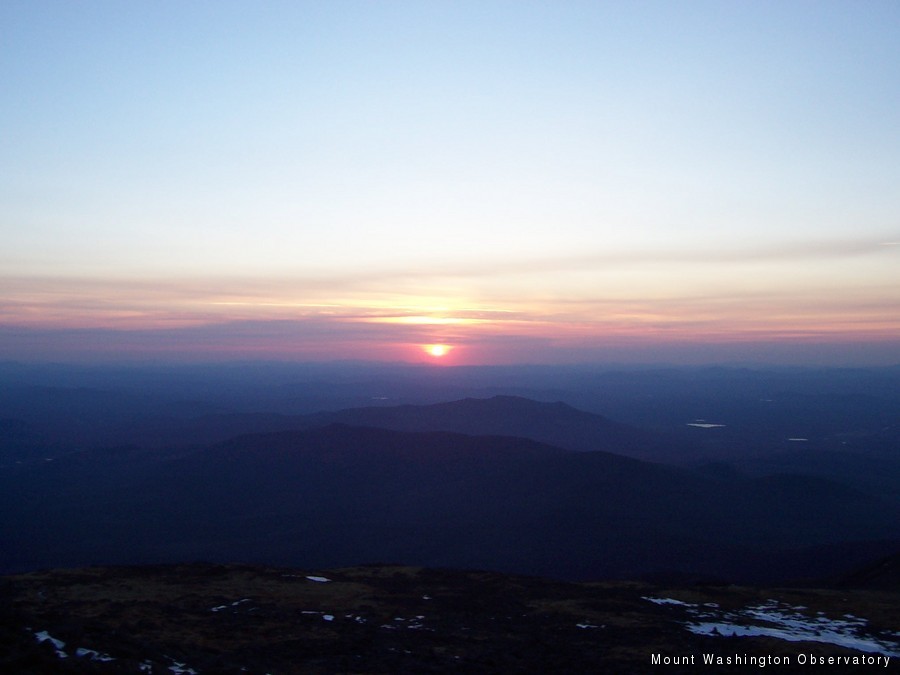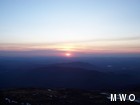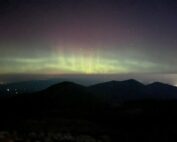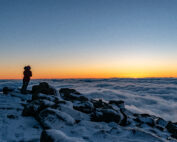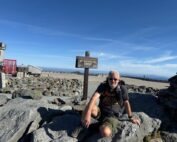Night Shift
2008-04-26 21:25:15.000 – Steve Welsh, IT Observer
A recent sunset to start my day off
Last Wednesday’s shift change felt a little different for me. Not only did we take the truck half way up the auto road, before transferring to the Snow Tractor for the final stage, but I was also thinking about the upcoming week, when I’d be working nights, for the first time, at the observatory. It’s been 20 years since I’ve done a night shift; way back when I was working in Antarctica. So it was with a little trepidation that I began the week.
The night routine here is a little different to the day shift, especially with regard to collecting and summarizing the day’s weather data. There’s also several radios shows and weather phone recordings to be done. And of course its dark most of the time and your body gets that “jet lag” feeling since everything is shifted 12 hours. I have to admit that keeping track of time is confusing at best up here since weather observations are done on UTC (Zulu) time – some 4 hours ahead of Eastern Daylight Time (EDT) which is the time the rest of the Eastern US is currently running on, or as we refer to it “valley time”. The observatory itself works on Eastern Standard Time (EST) throughout the year since this makes recording daily weather statistics and climate data easier – so at the moment we are one hour behind “valley time”. Couple this with the fact that I start work as the sun sets and go to bed when it rises and you can, perhaps, understand why I’ve no idea what day it is at the moment.
To make things even more interesting on my first night the long spell of fine weather finally broke with a couple of thunderstorms. We also set a new record daily high temperature of 51 degrees Fahrenheit – so it was a busy time. Since then it’s been far quieter and I’ve really enjoyed watching the stars, meteors and moon when out doing observations. Another good thing about nights is that you get first pickings from any leftovers. Night shift definitely has its advantages.
Steve Welsh, IT Observer
From Mountains to More Mountains
From Mountains to More Mountains: This Time with Stronger Winds By Alyssa Bélanger On the observation deck in high winds. Hello there! My name is Alyssa Bélanger and I am a fall
From Summit to Sign-Off: My Farewell to the Rockpile
From Summit to Sign-Off: My Farewell to the Rockpile By Amy Cotter Enjoying my last Mount Washington sunset (for now) on September 13, 2025. After two incredible years with the Mount Washington
Trail Report: Seek the Peak Hikes 16 and 17!
Trail Report: Seek the Peak Hikes 16 and 17! By Chris Nichols September 22, 2025 – Summit 16 of 17 A chilly morning turned into a spectacular day on Mount Washington. The thermostat in

